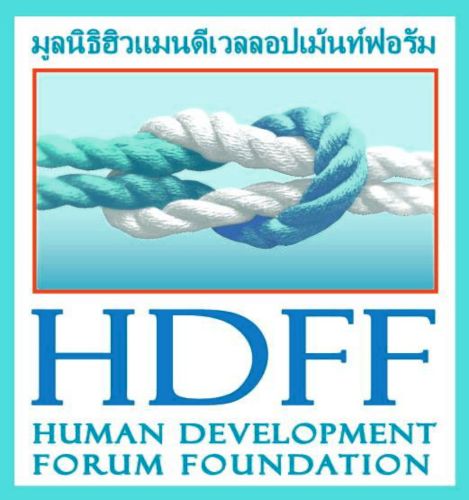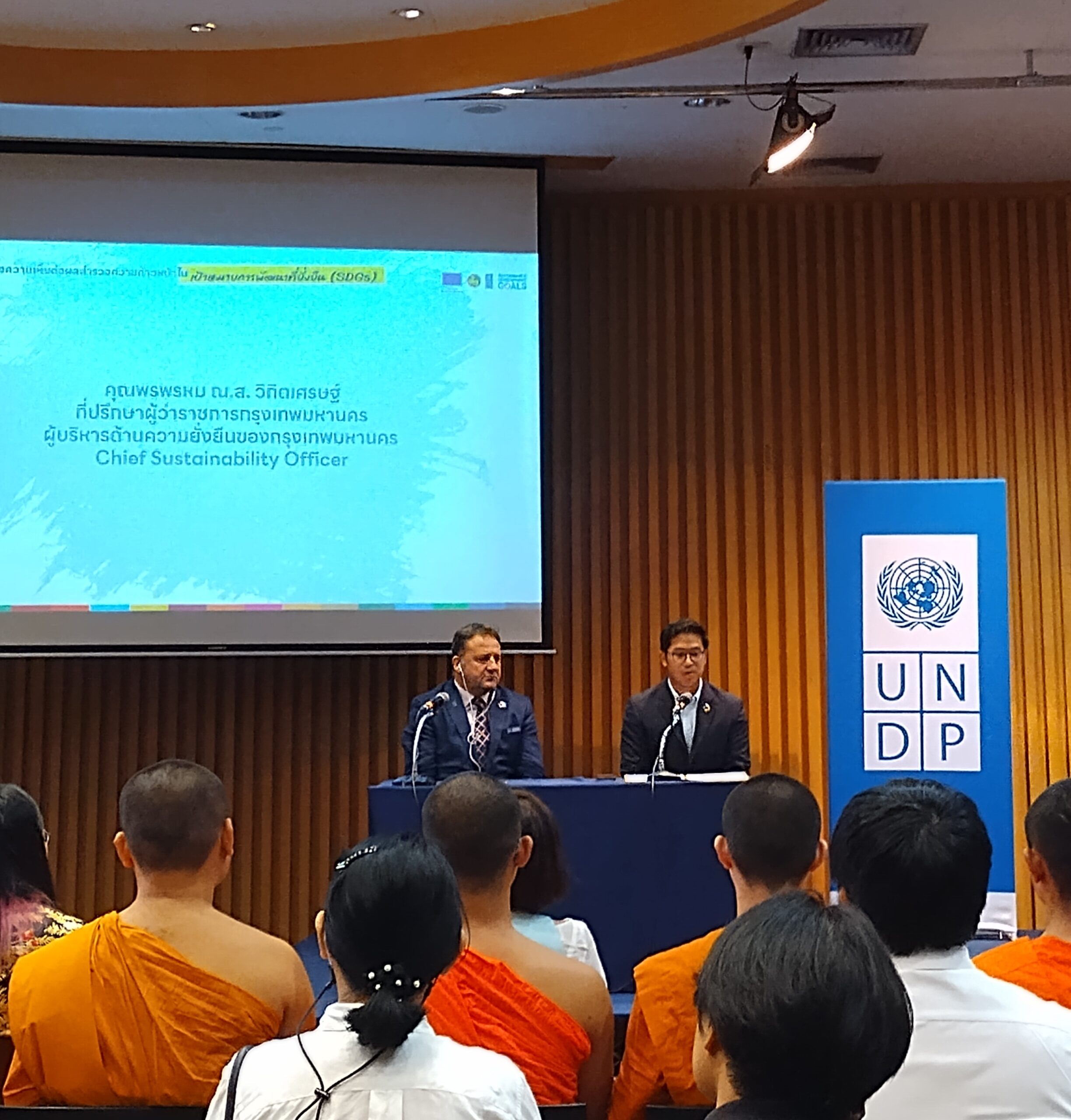On the 2nd of February, an HDFF Team attended the Multilateral discussion forum on the Results of the SDGs progress survey of 15 pilot provinces held by UNDP Thailand at the Bangkok Art and Culture Center.
This second session of a participatory cycle on the topic of the localization of SDGs in Thailand saw the interventions of researchers from the National Institute of Development Administration (NIDA) and the Thailand Development Research Institute (TDRI). This event focused on the current state of the advancement of the SDGs at the national level and in Bangkok and on the priorities of citizens concerning SDGs. Similar events will be hosted in the coming weeks in fifteen of the Kingdom’s provinces. As highlighted by Renaud Meyer, UNDP’s Representative in Thailand, this second discussion’s objective was to assess where each province stands regarding its advancement in the Sustainable Development Goals. By being able to clearly see their advancements, blindspots, and potential opportunities, administrations can better mobilize different stakeholders (civil society, NGOs, and the private sectors) to achieve SDGs at the local level.
The first study focused on respondents’ expectations of the UN’s SDGs. The presenter described the methodology she and her colleagues used to sample the opinion of the population throughout Thailand. By surveying and interviewing 400 people per province (and 10,000 people through an online survey), NIDA was able to decipher trends in the expectations of the public regarding SDGs.
The respondents’ concerns were linked to SDG1: no poverty, SDG4: quality education, SDG8: decent work and economic growth, SDG3: good health and well-being, and SDG2: No hunger.
The researcher then showed the gap between the needs of the people and the steps taken by the government to solve them. In all of the five main concerns mentioned earlier, the government is taking steps to better education and eradicate poverty, only to cite a few examples. However, those efforts remain insufficient compared to the needs of the respondents. In this instance, appropriate local policies, more transparency and the erasure of corruption, and the creation of local development projects are seen as appropriate guidelines, to improve the quality of life of citizens.
The second presentation by the TDRI team focused on a ten-year study from 2013 to 2023 that showed and compared the level of advancement of SDGs in Bangkok and other regions.
Aligned with NIDA research, the TDRI team found that SDG1: no poverty, SDG3: good health and well-being, SDG4: quality education, and SDG2: no hunger were seen as critical. Most of Bangkok’s SDG goal’s advancement were higher than the national average. In regards to issues related to poverty, hunger, good health and well-being, quality education, industry, innovation, and infrastructure; Bangkok scored higher than the national average. However, on issues related to reduced inequalities (SDG10) and even more badly in terms of decent work and economic growth (SDG8), affordable and clean energy (SDG7), and life on land (SDG15), Bangkok’s was more than 20% lower than the national average. Added to that SDG5: gender equality, SDG6: clean water and sanitation, and SDG14: life below water could not be measured nor monitored per the lack of data available.
Despite the overall encouraging results shown by this study for Bangkok’s SDG advancement; inequalities and issues regarding decent work and economic growth have led to the development of urban poverty in the capital. The real growth of income slows down constantly and people often earn a bit higher than the low earnings needed to get financial support from the government. Because of the high cost of living in Bangkok compared to the rest of the country, many are struggling.
In the two studies, SDGs proposed an evaluation framework enabling the highlighting of issues faced by everyday citizens. The comparison between provinces aims to see in which aspects Bangkok can learn from other regions and their policies (and vice-versa) to continue developing SDGs and better the livelihood of citizens.
Discussions and remarks by attendees followed the two presentations. The lack of diversity was highlighted by an organization. Although the first study took in respondents from different ages and religious backgrounds for example, the lack of migrant workers and the absence of the youth opinion (most respondents in the first studies were in their thirties, forties, and fifties) in the study group was observed. This lack of diversity inherently impacted the results, and issues related to the status and difficulties of migrant workers (for instance) may have been overlooked.
The lack of proper data collection and sharing was also brought up by others. Essential data regarding gender equality were not presented despite its huge importance in policy-making and collaboration between the public, private sector, and civil society.
Because of the participatory nature of the event, those comments and discussions were welcomed by the moderator.
Lastly, the need for the studies to be put together and studied as such was brought up: by knowing people’s expectations and the current situation of the advancement of SDGs, the studies can be used as accountability tools in front of decision-makers.


Comments are closed